Joining us here at The Redline for the first time is the ineffably brilliant Scotty Newman. Also known as Addicted To Sliding on Instagram and YouTube, Scott is an incredibly fast driver and has driven some of the wildest cars on Earth. Many of you will know him from the pages of Motor and more recently Carsales.
We are humbled by his presence and for this fantastic track review of the two new Corvettes.
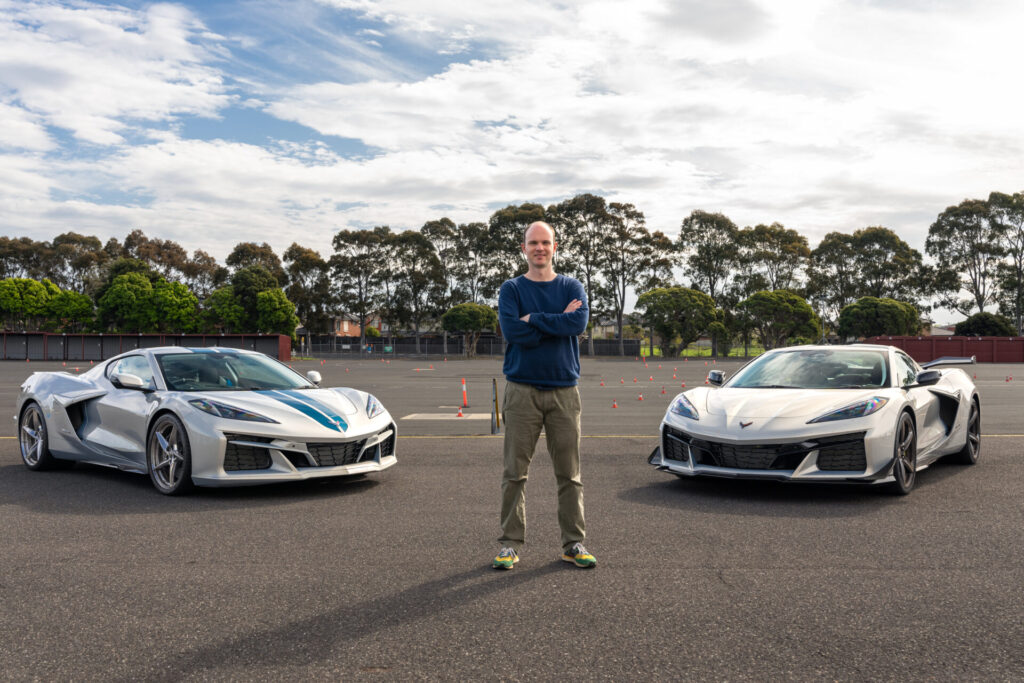
Words: Scott Newman
The Chevrolet Corvette is just like a bus. You wait ages for one and then two turn up at once. Thankfully, given GMSV (General Motors Special Vehicles) laid on Sandown Raceway for our introduction to the 2025 Chevrolet Corvette E-Ray and Z06, that’s where the comparisons end.
If you haven’t been paying attention, the eighth-generation Corvette is radically different to its forebears, actually doing what Chevrolet has been threatening almost since the car’s inception and moving the engine behind the passengers.
The Stingray arrived in early 2022 but since then it’s been tapped feet and drummed fingers while waiting for further promised variants. They’ve now arrived and push the Corvette firmly into supercar territory, the reason the mid-engined move was made in the first place.
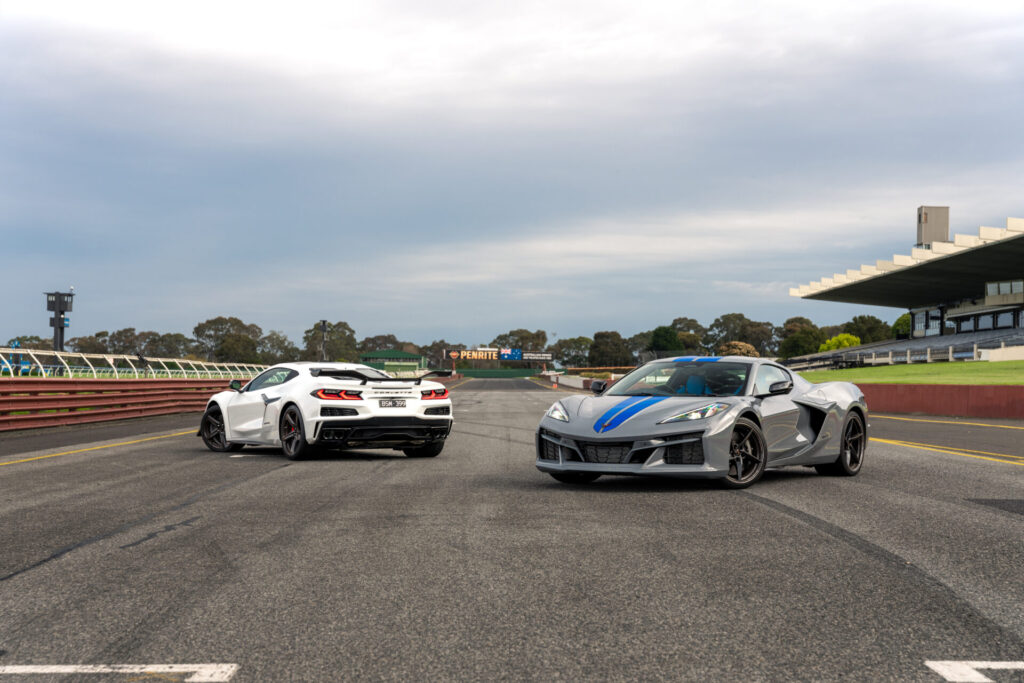
In a slight break from tradition, we’ll leave some of the typical The Redline segments such as entertainment and safety for the road review as this was a brief first taste held exclusively on track. So, let’s dig into what the E-Ray and Z06 are and what they’re like to drive really fast.
How much are they and what do I get?
Chevrolet Corvette E-Ray: $275,000 +ORC
Chevrolet Corvette Z06: $336,000 +ORC
The 2025 Chevrolet Corvette E-Ray and Z06 are as mechanically different as they are visually similar, so let’s deal with each in turn. Despite what the name suggests, the E-Ray isn’t powered by electricity but it does incorporate it.
It takes the familiar mechanicals of the Stingray – a 369kW/637Nm 6.2-litre V8 driving the rear wheels through an eight-speed dual-clutch gearbox – but adds a 119kW/165Nm electric motor on the front axle.
This lifts outputs to 488kW/806Nm and thanks to this being the first Corvette ever with driven front wheels, it’s also the fastest accelerating Corvette ever, at least until the nutty ZR1 enters production.
The 0-100km/h claim is 2.9sec and Chevrolet makes a point of this being from rest, rather than using the traditional one-foot rollout like most American cars. It then storms through the quarter mile in 10.5sec at 209km/h. Fast car is fast.
You pay for the pace, however, with the E-Ray costing $275,000 plus on-road costs, a hefty $78,000 premium over a Stingray of the equivalent spec. This is offset somewhat by the standard fitment of giant carbon-ceramic brakes behind equally enormous rolling stock made possible by the wider bodywork.
Both E-Ray and Z06 are 94mm wider at the rear than the standard Stingray, which allows for a much greater footprint. Whereas the regular car must make do with 245/35 and 305/30 rubber front and rear respectively, its brethren up this to 275/30 and 345/25 along with increasing the wheel size by an inch to 20s front and 21s rear.
It’s here we can deal with the similarities. As standard both cars wear Michelin Pilot Sport 4 S rubber and use double wishbone suspension all ’round with Magnetic Ride Control adaptive dampers, albeit with unique calibrations.
The E-Ray carries a 124kg weight disadvantage, though that’s relatively slight for a hybrid thanks to the tiny 1.9kWh battery (1.1kWh useable) that provides a meagre 4-6km of electric-only range but, perhaps of more importance, the possibility of silent getaways.
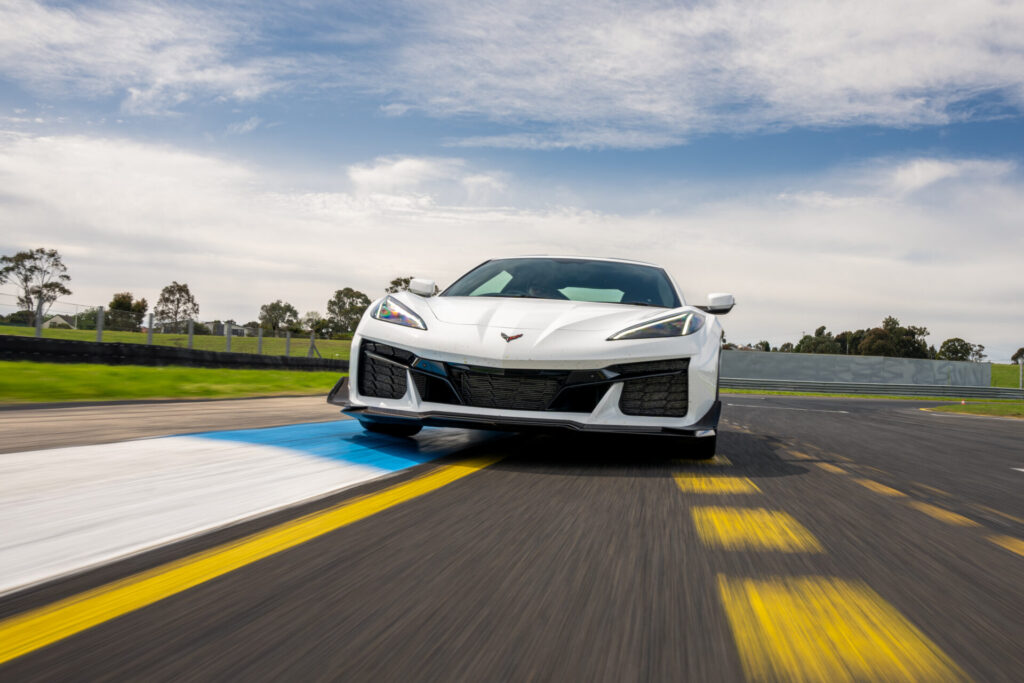
Inside the two are similar with plenty of leather and carbon fibre, a decent driving position (though the strange quartic steering wheel would ideally go a little higher) and the unique arc of buttons that separates driver from passenger and takes some familiarisation.
Now we begin to diverge again. The Z06 climbs the pricing ladder further still, starting at $336,000 plus on-road costs, though that figure is very much just the start for reasons which will become apparent in a moment.
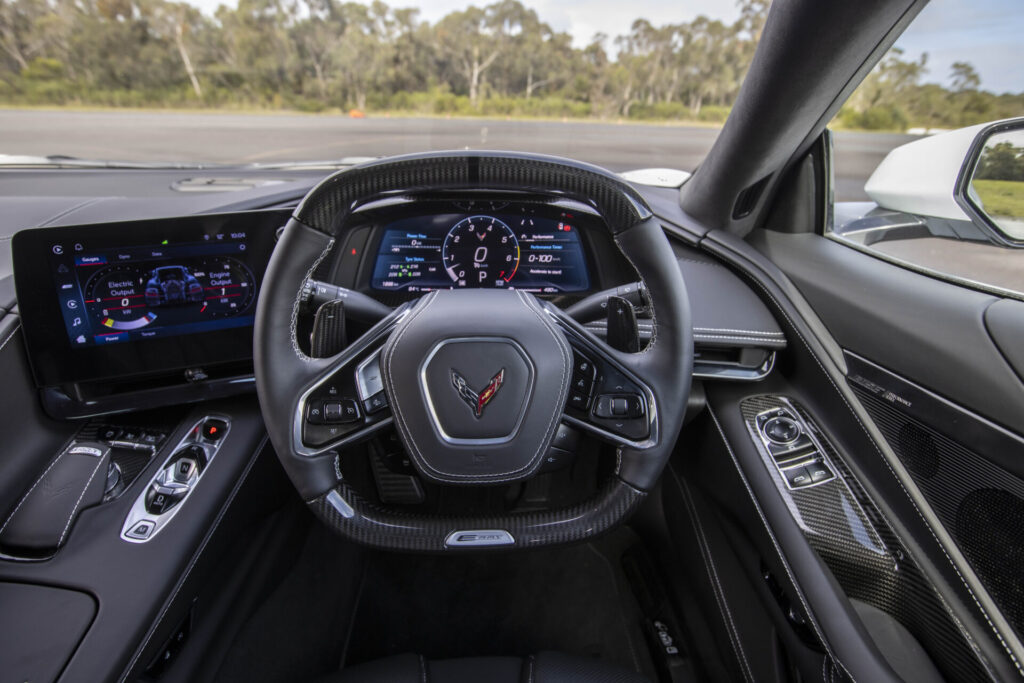
‘Under the hood’ as they say Stateside – quick aside, if a frunk is a front trunk, is a rear hood a reod? – is a unique 5.5-litre naturally-aspirated V8 that spins to 8600rpm thanks to a flat-plane crank and dry-sump lubrication.
It produces a wild 475kW and 595Nm and while the eight-speed dual-clutch gearbox remains, a shorter 5.56:1 final drive improves acceleration, the 3.0sec 0-100km/h claim just 0.1sec slower than the all-wheel drive E-Ray.
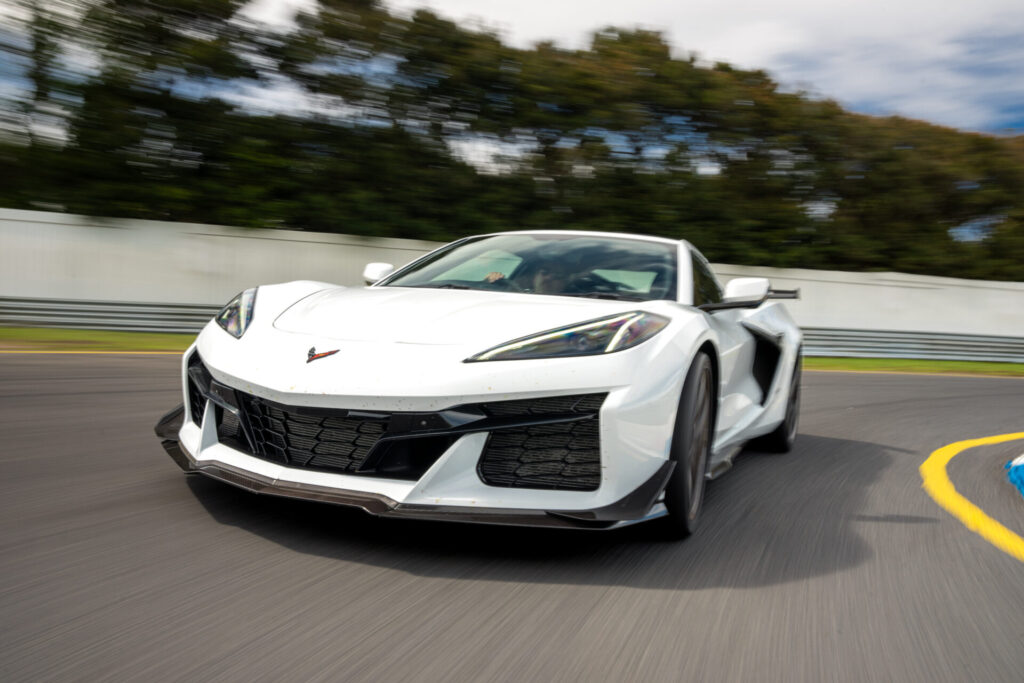
However, to really unleash the Z06’s potential you need to take a deep breath and select the $50,000 Z07 package that includes carbon-ceramic brakes, a unique calibration for the adaptive dampers, ultra-focused Michelin Cup 2 R track tyres and a set of carbon fibre wings that more than double the downforce generated at 300km/h to 333kg.
Then there’s the carbon fibre wheels, that are made just the other side of Port Phillip Bay and cost a little more than $1000 ($23,000) per kilogram saved (18.6kg), though the fact it’s unsprung mass is multiplicative.
Happily, the Z06 provided for our use is specced in its ultimate configuration so, what’s it like?
Driving
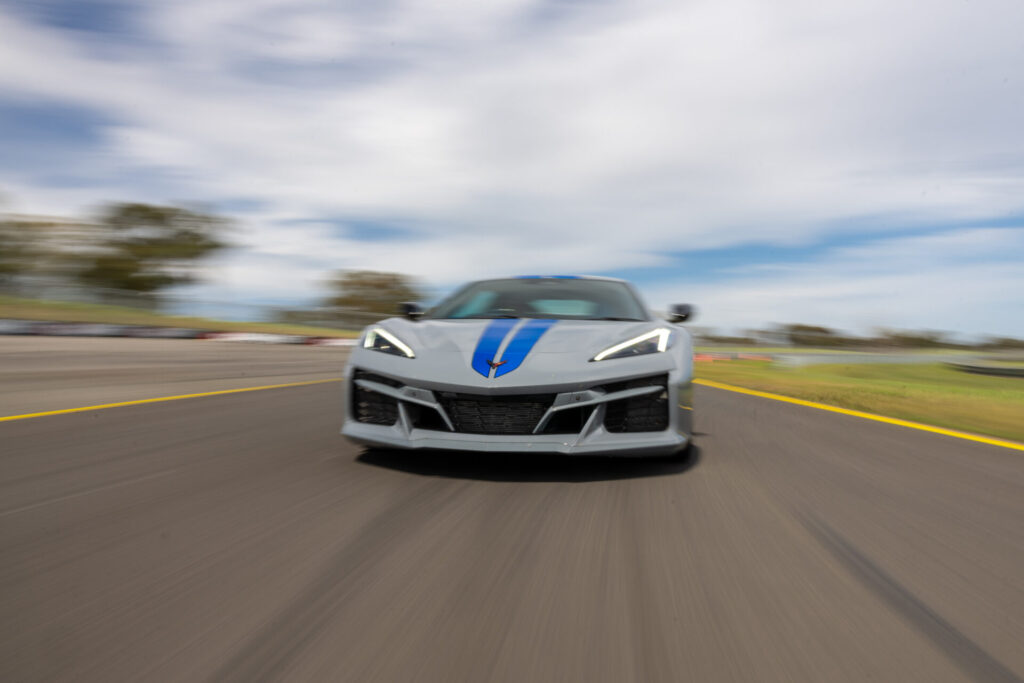
But before we cover the Z06, let’s deal with the E-Ray as that’s what’s presented first. With the bigger wheels and wider bodywork, it looks so much more aggressive than the somewhat awkward Stingray and has proper supercar presence.
Given the location, it’s straight into Track Mode, which automatically adds weight to the steering (thankfully not too much), firms up the suspension, sharpens up the throttle and backs off the stability control, but another click also selects manual for the gearbox.
The first thing that hits you – literally – is the back of the seat as the electrically-assisted V8 powertrain provides incredible acceleration. The combination of electric motors and natural aspiration is a match made in heaven, the former filling in the gaps until the latter hits its stride.
And the performance? There’s a suspicion the onboard computer incorporates rollout, but then it also displayed a 0-100km/h time of 2.4sec.
Response is instant but beautifully calibrated, the front wheels never misbehaving with torque steer, just helping allocate the power to the point that even under full throttle exiting tight corners the traction control remains dormant.
Surprisingly, the hybrid assistance enhances the sound, a jet-like whine accompanying the traditional V8 growl, though it may be an acquired taste.
Brake feel is a further surprise, with excellent progression despite the perfect storm of electricity regeneration and composite construction as well as incredible stopping power.
The E-Ray may be pitched as the grand tourer of the range but it’s very, very accomplished on track, the only real chink in its armour being the need to replenish the battery every three or four laps. That said, it doesn’t hurt to give the rest of the car a breather and one slow lap is all it takes for charge to build once more.
Into the Z06 and the differences are apparent before reaching turn one for the first time. The engine screams past the E-Ray’s shift point, just beginning to get into its stride, and it has a musicality to its note not always present in flat-plane engines.
It feels lighter on its feet but also less settled. Not in a way that erodes confidence, but there’s the sensation of hyperactivity, of pent-up excitement. It nudges left and right over bumps the E-Ray ignores but the advantage of this is greater agility.
Stopping power is mind-blowing, a full ABS stop having your eyeballs hanging out of your face, grip from the Cup R tyres is absurd and the entire car just goads you into pushing harder and driving faster. It’s intoxicating.
The traction control could be a little more lenient, though applying some progression to your throttle inputs keeps it happy, but as a tool for destroying racetracks the Z06 can hold its head high in some very serious company.
Redline recommendation
As mentioned at the top of this piece, these variants (and those to come) are why the Chevrolet Corvette went mid-engined. To make another front-engined Stingray would’ve been a relatively simple proposition, but to offer hybrid assistance and the level of performance and agility contained in the E-Ray and Z06 in a traditional configuration would’ve been much more difficult, if not impossible.
I’m not sure if Chevrolet would appreciate or agree with the comparison, but think of the Corvette E-Ray and Z06 as the 911 Turbo and GT3 respectively. One is pitched as the all-weather grand tourer, though as we’ve discovered it happens to be perfectly comfortable with hot lapping.
The other is a more extreme machine for those who want to chip away at their lap times. Is it as good as a GT3? That’s a very difficult question to answer without driving the two back-to-back, but certainly it doesn’t seem as there’s a tremendous gulf in ability between the two.
Either way, these two Corvettes definitely earn their place under the General Motors Special Vehicles banner.



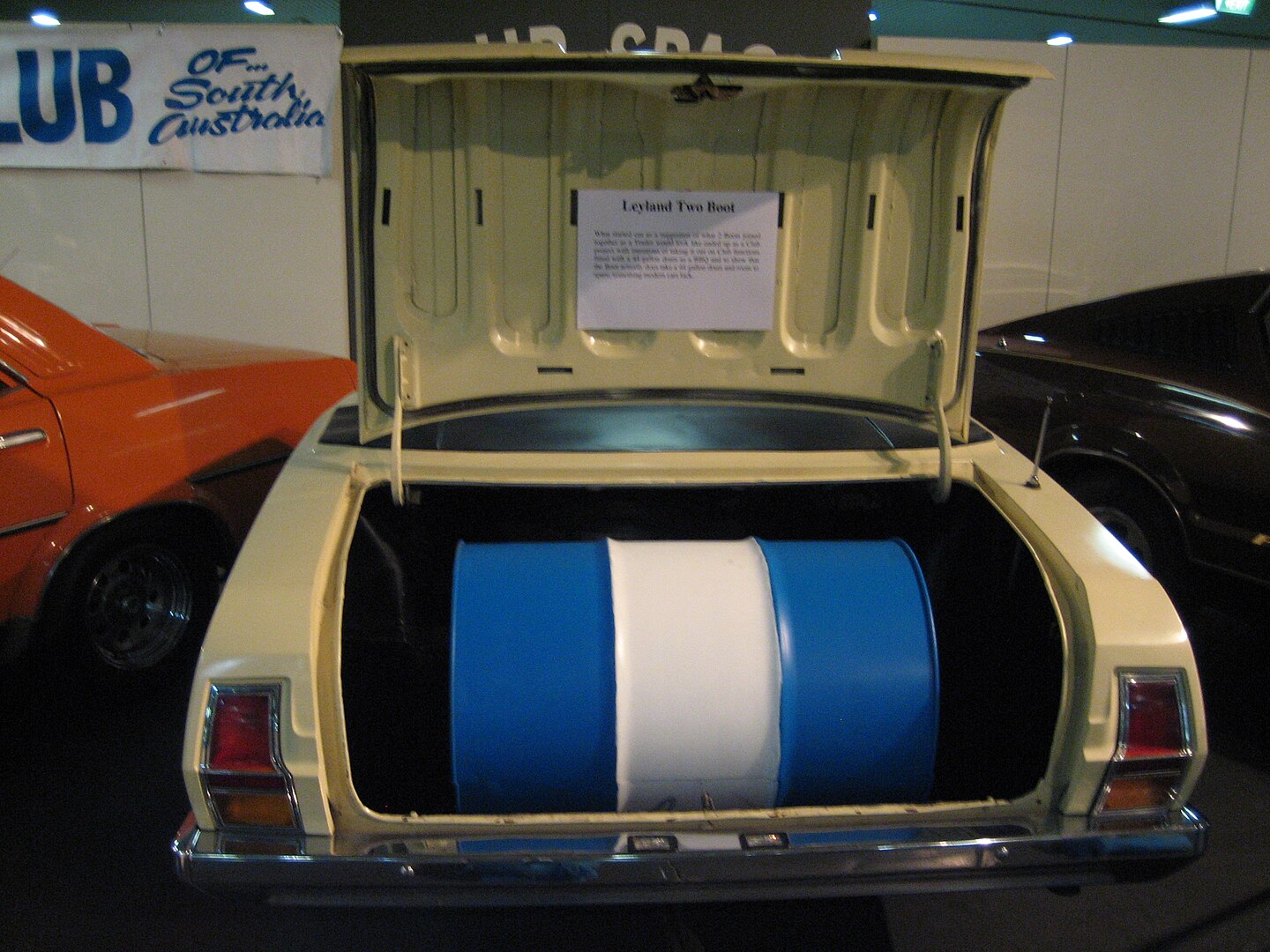
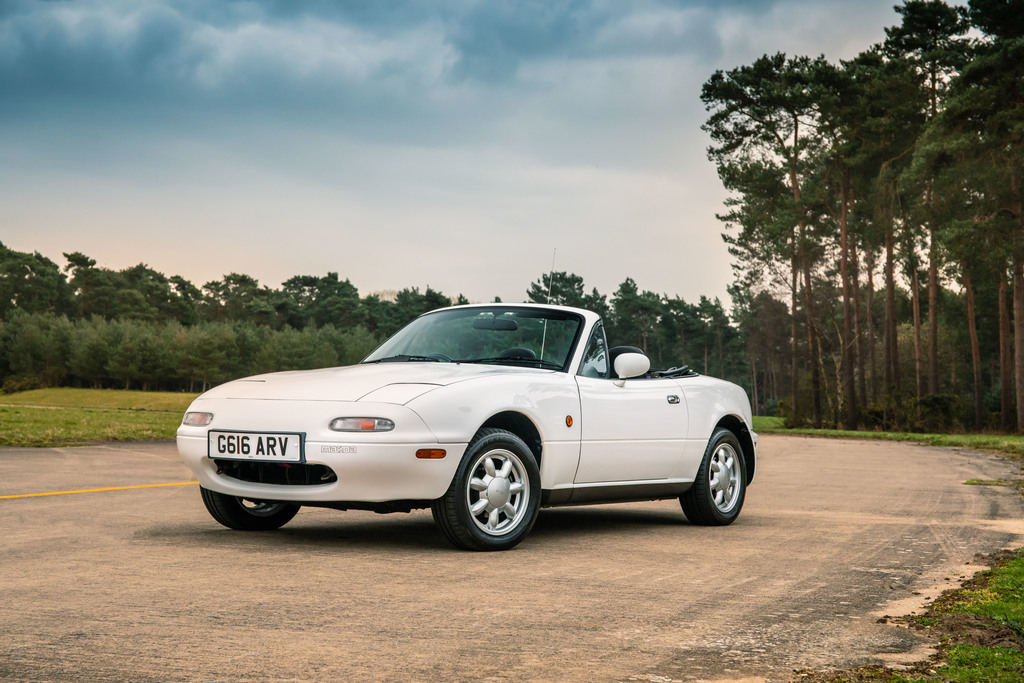
Leave a Reply